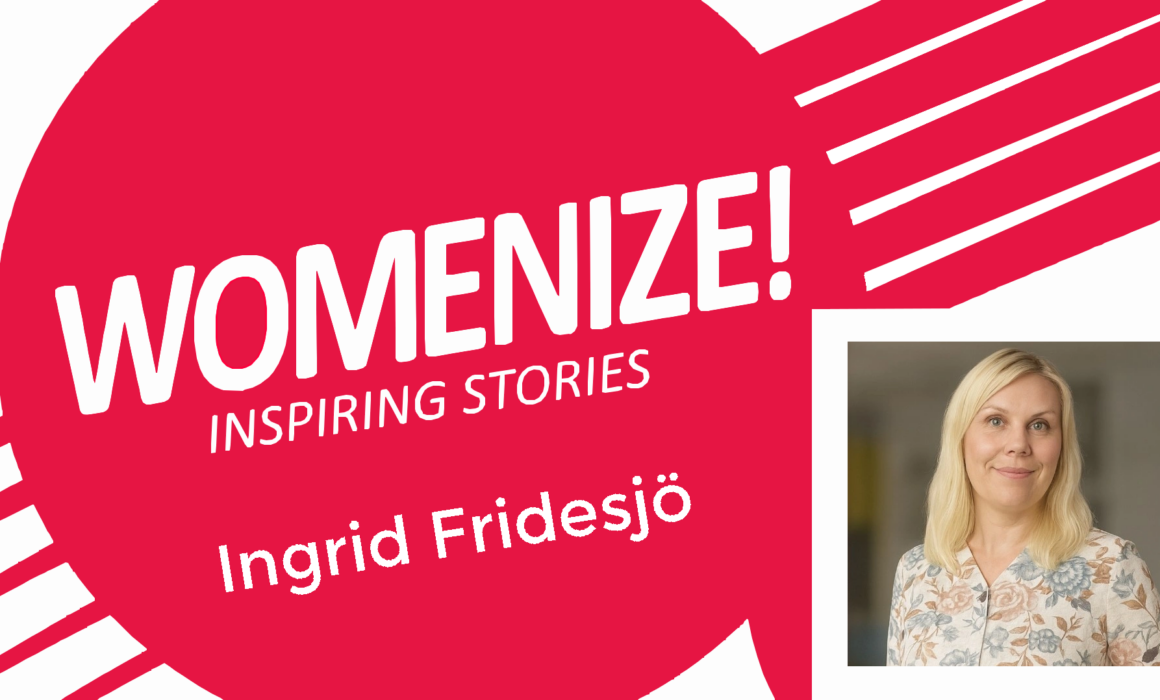Ingrid Fridesjö – Womenize! – Inspiring Stories
Womenize! – Inspiring Stories is our weekly series featuring inspirational individuals from games and tech. For this edition, we talked to Ingrid Fridesjö, CEO at Blamorama Games. She speaks about her journey from traditional storytelling in journalism and film to creating interactive, educational games that engage players, emphasizing the power of combining local roots with a global mindset to build a creative, collaborative game studio. Read more about Ingrid here:
Hi Ingrid! Your journey spans journalism, film, and now leading your own game studio. What was the turning point that inspired you to shift from storytelling in traditional media to building digital experiences through games?
Storytelling has always been at the core of what I do. Whether through visual content, news reporting, or now, games. The real turning point came when we, as a team, wanted to create something more interactive and playful together. We wanted to tell stories that people could step into and not just watch, and we knew that gamification is a fantastic way to support learning and reach people with a message.
That’s how Bumi: Next Stop, Earth! was born – a mobile game where kids learn to care for the planet through casual play. It became the starting point of the Bumi Universe, and we’ve since expanded with Bumi Cosmic Colours, a creative coloring book game, and Sliding into Luleå, a cozy friendship game set in our hometown. The platform may have changed, but the heart of it remains the same: stories that connect, teach, and carry a message.
As the founder and CEO of Blamorama, you’ve built an international network while staying rooted in Luleå. How do you turn a local base into a global platform, and what advice would you give to creatives working outside major industry hubs?
We’ve proven that it’s absolutely possible to build something global from a small place. Luleå may not be a traditional game development hub, but it’s our creative home. From here, we collaborate with developers and artists across Southeast Asia and work with partners and clients throughout Europe.
And actually, our team reflects that global mindset: several of us have moved to Luleå from different parts of the world, like Malaysia and Indonesia, bringing new perspectives and experiences into the studio. For us, it’s not about where you are on the map, but how open you are to building strong, long-term relationships based on trust, clarity, and shared goals.
My advice to other creatives outside the big cities is to use the strengths of your local environment such as the space to experiment and the unique voice it gives you, and combine that with a global mindset. Technology makes distance irrelevant. What matters is how well you connect and how consistently you deliver. Your location can be an asset, not a limitation. There’s often more space to focus, prototype, and try new ideas. My advice is to stay rooted where you are if it feels right, but to keep reaching outward. Build a strong network, stay curious, and trust that your perspective has value.
Looking back at your early days reporting and working behind the camera at SVT, what skills or lessons from that time still shape how you lead creative teams today?
Before starting Blamorama, I worked with both children’s programming and news at SVT where I developed content, shaped ideas, and reported on stories. That experience gave me a deep respect for storytelling, clarity, and purpose. It also taught me how to adapt quickly, work with tight deadlines, and collaborate across different disciplines.
Those lessons are still with me today. At Blamorama, we lead small, agile teams where everyone wears many hats. I try to create an environment where ideas flow freely but where the whole team stays anchored in a shared goal and shared values. Just like in a good newsroom or production team, every contribution matters, but direction and trust are what keep things moving.
Thanks for this interview, Ingrid!
Ingrid’s links: LinkedIn

